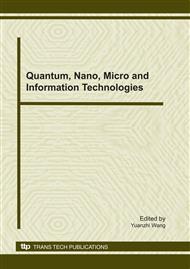p.347
p.352
p.359
p.363
p.369
p.375
p.383
p.388
p.395
The Use of TiAlN Coated Carbide Tool when Finish Drilling of Stainless Steel X4Cr17Ni8TiN
Abstract:
In this paper presents the conclusions of machinability tests on a new stainless steel X4Cr17Ni8TiN, which applicated in food processing industry, and describes important concurrent parameters for the cutting zone during the process of finish drilling. This paper presents the results of experiments that concerned the verification of temperature fields in tool and the machined surface by drilling of stainless steels X4Cr17Ni8TiN. The content of this paper also focuses on the analysis of selected domains through basic indicators of steel machinability: cutting edge tool life, surface roughness, and wear mechanisms. The machinability of stainless steels is examined based on the cutting tests. The effect of cutting speed are analysed by tool wear mechanisms, and temperature tool. Based on the cutting tests, cutting speeds of 40 to 80 m/min, feed rate of 0.04 to 0.1 mm per rev.and solid a new design of screw drill from sintered carbide with hydraulic holder. Diameter of screw drill is 5.5 mm. Tool wear criterion of VBK value 0.12 mm. Wear mechanisms analysed by Semi Electron Microscopy (SEM).
Info:
Periodical:
Pages:
369-374
Citation:
Online since:
November 2010
Authors:
Price:
Сopyright:
© 2011 Trans Tech Publications Ltd. All Rights Reserved
Share:
Citation:


